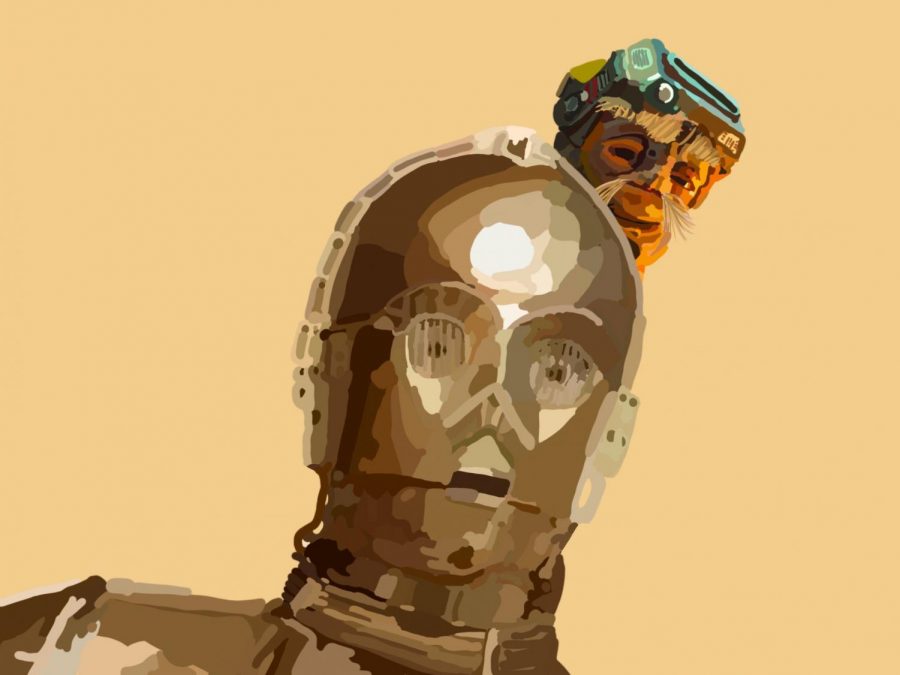Why “The Rise of Skywalker” Completes the Franchise
“The Rise of Skywalker” is thought to be better than the rest of the trilogy by some critics
February 20, 2020
Rating: 3/5 Falcons
When I went into the theater to watch Star Wars: The Rise of Skywalker last month, I was expecting to be underwhelmed. I had not enjoyed either of the previous two movies in the new trilogy, and was disappointed that, after so many years, the writers of Star Wars had decided to just recreate the old movies with new characters. I was not expecting the third installment to be any more original. However, I was surprised at how well this third movie not only resolved this trilogy but enhanced the franchise.
One of the first things most people criticize about the movie was the return of Emperor Palpatine. Many people feel that this was a cheap move and didn’t add to the story, but I feel that Palpatine’s return was necessary because it explained the First Order (the antagonists in the first two movies) and connected the new franchise to the original movies.
One of my biggest problems with the first two installments of the newest Star Wars trilogy was the fact that the First Order seemed to be just another Empire; I was confused as to why the writers of Star Wars couldn’t think of any other enemies and simply chose to slap a new name on an old enemy. I found this issue to be exemplified in the evil Supreme Leader Snoke who, it seemed, just replaced the emperor for the reboot movies. The prequel movies revolve around Anikan Skywalker, his fall to the dark side, and the creation of the Galactic Empire under Palpatine. The original movies see Luke Skywalker, Anakin’s son, save the Galaxy and redeem his father. And now, The Rise of Skywalker reveals that Emperor Palpatine was secretly pulling the strings all along, binding the franchise together into one cohesive narrative.
The Rise of Skywalker also expands on the consistent dilemma that Jedi face throughout the Star Wars universe: avoiding the temptation of the dark side. In the prequels, Anakin becomes increasingly moody and is ultimately cast out by the Jedi because they become distrustful of Anakin’s powers. He falls to the dark side because after helping Palpatine and using the “evil” dark side, he can no longer be a part of the order. The final fight of Return of the Jedi (movie six) contrasts Anakin’s experience with the dark side, showing Luke lashing out with anger and attacking Darth Vader; unlike his father, he does not succumb to the dark side. Despite having felt and used its power, he is still considered a Jedi and not a Sith. Rey’s arc in the new trilogy—specifically this most recent movie—expands on the idea that to truly be a Jedi, one must not be afraid of the dark side by showing Rey using Force lightning (an indication of the dark side) but still remaining a Jedi throughout the movie.
The reason why The Rise of Skywalker deserves more praise than it is receiving is that the writers of this movie had a very hard job. They had to figure out how to conclude a trilogy that had almost no original ideas in it and they had only one movie to do it. The move to revive Palpatine may seem like a gimmick at the outset, but, in fact, it was a well-thought-out decision which allowed The Rise of Skywalker to expand the Star Wars Universe and connect the trilogy to preceding ones, all while clarifying the backstory of the previous two movies.
This piece also appears in our January 2020 print edition.










